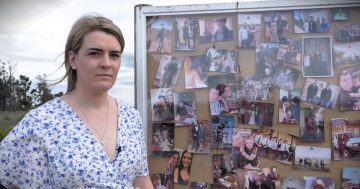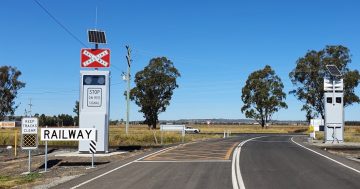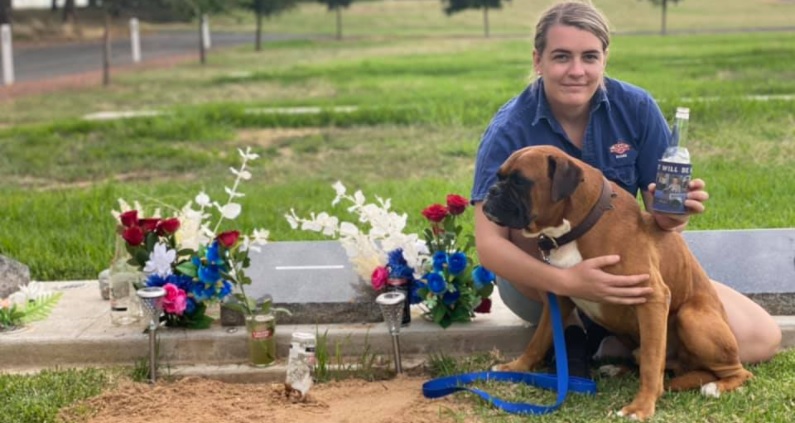
South West Slopes rail safety campaigner Maddie Bott at the grave of her fiance Ethan Hunter, who died with work colleague Mark Fenton in a level rail crossing accident near Young 12 months ago. Photo: Maddie Bott.
On Wednesday, candles were lit across the nation in collective and harmonious support of the efforts of Grenfell nurse Maddie Bott’s campaign to beef up safety measures at level rail crossings in the face of industry inaction.
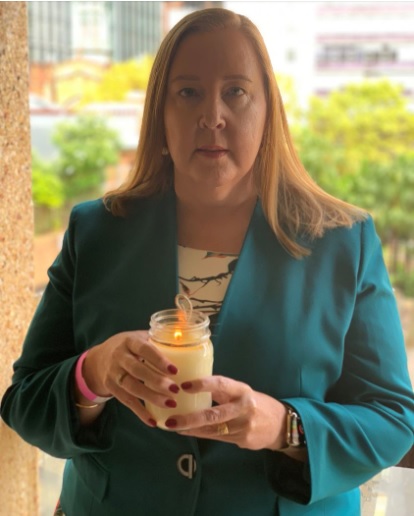
NSW Shadow Minister for Regional Transport and Roads Jenny Aitchison was one of the first to light a candle as part of this week’s memorial vigil. Photo: Jenny Aitchison.
The vigil played out on the Facebook page she has named Eurabba Heroes, and as much as the messages were empathetic and warm-hearted, they were also united in a political stance that erased borders and boundaries in insisting on change.
Wednesday marked 12 months since the death of Maddie’s fiancé Ethan Hunter, 27, and his work colleague Mark Fenton, 50, when the b-double they were travelling in collided with a freight train at a level crossing on a private road west of Young in the NSW South West Slopes.
It was around 5 pm when Maddie was unable to locate Ethan having travelled by car from Young to take him to dinner. Baffled, she pulled up in the nearby village of Bribbaree.
In a rural area where the bush telegraph still swiftly resounds, it was only a matter of minutes before she was told there had been an accident.
And while a quiet, isolated, passive railway crossing may have played a part in the last minutes of Ethan and Mark’s lives, today that spot on private property west of the town stands as a wilful, unyielding monument to the insistent dissenting voice that has become Maddie Bott’s in the face of tragedy.
For the past 365 days she has grieved, buried and mourned the man she was to marry in March 2021, and has also publicly launched a counterattack on behalf of all those people impacted by level rail crossing crashes.
Politicians have been lobbied, petitions have been signed and debate has been triggered in NSW Parliament in November 2021 as a result of Maddie’s efforts.
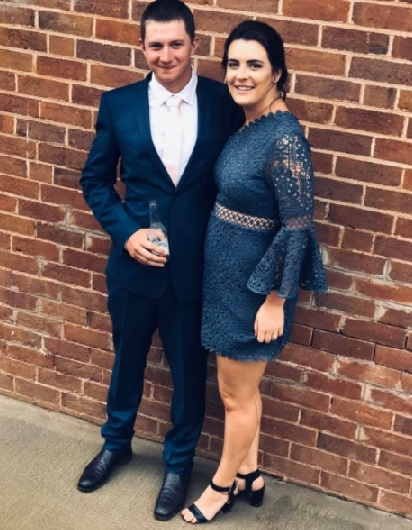
Maddie and Ethan prior to his death. Photo: Maddie Bott.
She has been joined by 12 other bereaved families – nationwide – who chose to step up out of their grief to rail against what they consider to be an ironically passive approach to level crossing safety.
“It’s heartwarming to know Ethan’s death has started many conversations and trials [sic] in Australia about rail safety,” she told About Regional last week.
“But to me and my family, it is also heartbreaking that it was not conducted after the 2004 Train Illumination report was released,” she said.
The Federal Government’s inquiry into some measures proposed to improve train visibility and reduce level crossing accidents resulted in five recommendations including improved visibility using reflective strips or plain and rotating beacon lights on locomotives, train-activated rumble strips at high accident risk rail crossings, a national level crossing risk scoring system and adoption of a national education program.
“If this research was put into action then, Ethan and many others would still be here today,” she said.
But, just weeks ago came the real kick in the teeth for Maddie.
On February 4, 2022, a review of research and national and international best practice in relation to train visibility commissioned by the Office of the National Rail Safety Regulator (ONRSR) was released.
The report identified around 30 potential controls for improving train visibility at level crossings with the majority focused on better illumination of trains.
But, said ONRSR Chief Executive and National Rail Safety Regulator Sue McCarrey, there was limited evidence regarding the effectiveness of these controls, emphasising the need for further testing and evaluation by freight operators.
“What we have to do now is have the industry take the initiative and commit to trialling these controls where appropriate to collect the evidence as to their effectiveness as longer-term safety measures,” she said.
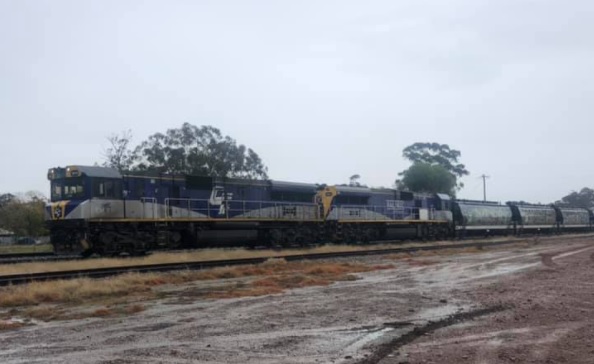
Maddie has been campaigning for better visibility of trains using this example of a train passing through Bribbaree which she said blended into the landscape. Photo: Maddie Bott.
“I’m pleased to note that through the Freight On Rail Group (FORG), the industry has indicated that they are going to be doing that,” Ms McCarrey said, adding that the Australasian Railway Association, the Rail Industry Safety and Standards Board and TrackSafe were also supporting the work to improve train visibility.
To Maddie, it’s just a veneer.
“We have no faith in the train lighting trials to be conducted by the ONRSR on the back of this review, or the research consultancy they contract to conduct these trials,” she said.
“We have seen countless, reviews, reports and trials over decades regurgitating the same content – none of which have achieved any significant safety improvements,’ she added.
“Side lighting must achieve the illumination of the entire length of trains in line with Australian road transport industry requirements.”
Maddie said unless the Federal Government legislated for rotating beacons on locomotives and side lighting on wagons through the Rail Safety National Law, rail companies will continue to dodge their safety responsibilities, bureaucrats will continue to shuffle paper across desks and more people will continue to die at passive crossings for decades and centuries to come.
“Our families will continue to call for legislation to be introduced requiring the installation of rotating beacons on locomotives and LED side lighting on wagons,” she said.
“We are also calling for improved safety measures (including extremely cost-effective solar-powered flashing lights) at passive level crossings.”







